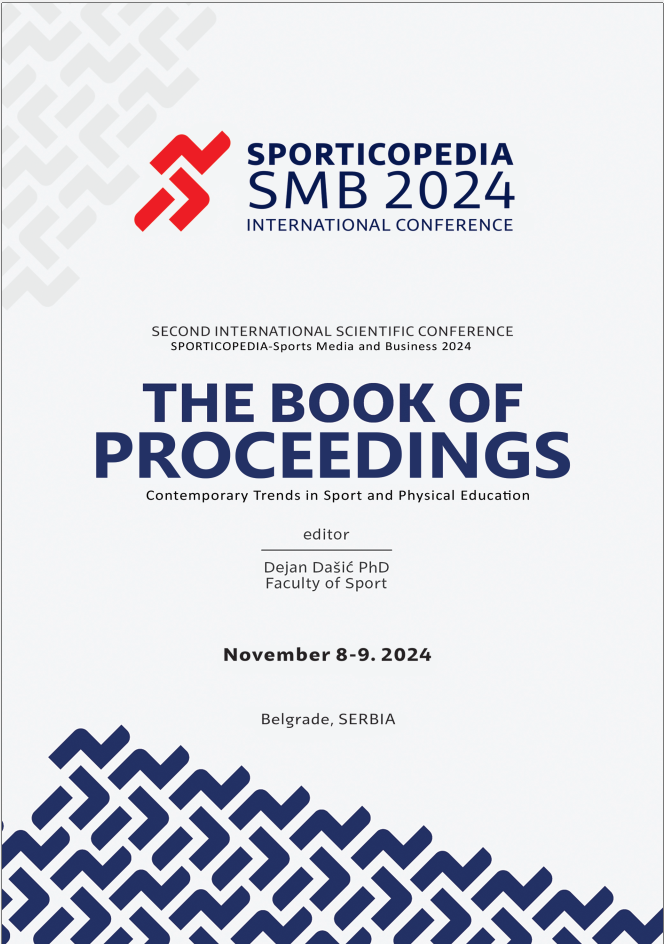Abstract
The main hypothesis of this paper is that the act of execution of noble fighters and people during the Slaughter of the Knezes, which took place in the former Sanjak of Smederevo in 1804, poses great potential for the development of dark tourism with the key role played by the media. The theoretical framework is based on the works of authors Malcolm Foley and John Lennon (1996) for places associated with suffering and death, as well as those of Stephanie Marie Yuill (2003) for their educational function in the development of dark tourism. On the other hand, the media may influence the decision making process regarding tourist destination selections through the agenda-setting theory. The proposed solution is that the Tourism Organisation Valjevo should, as a new source of news, assert itself to the media by strategically approaching the communication segment. This tourist attraction would become more noticeable in this way and the media would generate income and make up for the departure of advertisers to the advantage of both sides.
References
Bertrand, C. J. (2018): Media ethics and accountability systems. London: Routledge.
Currah, A. (2009): What’s Happening to Our News. Oxford: Reuters Institute for the Study of Journalism, University of Oxford.
Enemuo, O. B., & Amaechi, B. (2015). The Role of Mass Media in Tourism Development in Abia State. Journal of Tourism, Hospitality and Sports 11: 44-49.
Foley, M., Lennon, J. (1996). JKF and Dark Tourism: A Fascination With Assassination. International Journal of Heritage Studies, 2: 198-211.
Jalilvand, M. R. (2017). Word of mouth vs. mass media: their contributions to destination image formation. Anatolia 28, (2): 151-162.
Joksimović, Z. (1984). Jedan pokušaj zaštite kulturno-istorijskih spomenika u Valjevu. Glasnik istorijskog arhiva Valjevo 19: 151-178.
McLuhan, M. (1994). Understanding Media: The Extensions of Man. London: The MIT Press.
McCombs, M. (2020). Setting the Agenda: Mass Media and Public Opinion. Cambridge: Polity Press.
Mei, W., & Ying, Z. (2017). Symbolic Repertoires for City Branding Beyond Casinos: The Case of Macau. International Journal of Strategic Communication 11, (5): 415- 433.
Nenadović, P. M. (1980). Memoari. Beograd: Rad.
Niemelä, T. (2010). Motivation Factors in Dark Tourism – Case: House of Terror. Bachelor’s Thesis. University of Applied Sciences, Lahti.
Penezić, S. (2012). Od psa čuvara do poslušnih pudli. CM Komunikacija i mediji 22: 159 – 162.
Penezić, S. (2021). Odnos sporta i PR-a u savremenom društvu: Ciljevi i posledice. Sport, mediji i biznis 7: 39 – 48.
Petrović, R. (2014). Novi žurnalizam. Beograd: Jasen.
Petrović, R. (2017). Štampa – kičma medija. Beograd: Jasen.
Poter, Dž. (2011). Medijska pismenost. Beograd: Clio.
Schiller, H. I. (1971). Mass communications and American empire. Boston: Beacon Press.
Selenic, U. (2021). Komunikacioni aspekt turističkih potencijala i sportsko-rekreativnog turizma valjevskog kraja. Master rad. Univerzitet Union – Nikola Tesla, Fakultet za sport, Beograd.
Sommerfeldt, E. J., & Yang, A. (2018). Notes on a dialogue: twenty years of digital dialogic communication research in public relations. Journal of Public Relation Research 30, (3): 59-64.
Tunbridge, J. E., & Ashworth, G. J. (1996). Dissonant Heritage: The Management of the Past as a Resource in Conflict. London: John Wiley & Sons.
Zhang, X. (2018). Developing a New Measure of Media Reputation. Corporate Reputation Review 21: 71-83.
Walter, T. (2009). Dark Tourism: Mediating Between the Dead and the Living. In: R. Sharpley, P.R. Stone (eds.), The Darker Side of Travel – The Theory and Practice of Dark Tourism, 39-55. Bristol: Channel View Publications.
Yuli, S. M. (2003). Dark Tourism – understanding visitor motivation at sites of death and disaster. Master’s thesis. Texas A&M University.


